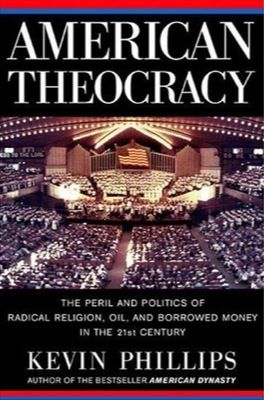 Reporters searching for the rise of the "religious left" don't have to look hard to find people to talk about the surge or growth in the movement. Never mind that no one has really defined exactly what this movement stands for politically, let alone theologically.
Conferences, Bible verse-dropping and citing the history of progressive religious movements (civil-rights, social gospel) are all nice and good for a quick-hit story. But as the Democrats look to rally a religious movement on their own to compete with the religious right, reporters should note the last three paragraphs of this excellent Economist article titled "American Theocracy." Reporters covering the intersection and politics should remember these poignant insights as they explore the movement:
Reporters searching for the rise of the "religious left" don't have to look hard to find people to talk about the surge or growth in the movement. Never mind that no one has really defined exactly what this movement stands for politically, let alone theologically.
Conferences, Bible verse-dropping and citing the history of progressive religious movements (civil-rights, social gospel) are all nice and good for a quick-hit story. But as the Democrats look to rally a religious movement on their own to compete with the religious right, reporters should note the last three paragraphs of this excellent Economist article titled "American Theocracy." Reporters covering the intersection and politics should remember these poignant insights as they explore the movement:
But is this truly a sea-change in American religious politics? Or is it a brief "hallelujah moment" -- born of Bush fatigue and political opportunism -- that will bring no lasting change? The betting is on the latter. The religious left suffers from two long-term problems. The first is that it is building its house on sand. The groups that make up the heart of the religious left -- mainline Protestants, liberal Catholics and reform Jews -- are all experiencing long-term decline. Most of the growth in American religion is occurring among conservative churches. And the constituent parts of the religious left are also at odds over important issues. Middle-of-the-road Catholics are happy to march hand-in-hand with mainline Protestants over immigration and inequality. But they often disagree over abortion and gay rights.
The secular left usually wins
Serious doubts also persist about how much the Democratic Party is willing to change to embrace religion. Some influential Democrats want real change. Others think that all they need to do is drop a few platitudes to religious voters and the God-gap will disappear. Mr Dean's performance on Pat Robertson's television programme was as telling as it was laughable. He not only chose to talk to a man who plays a much bigger role in the liberal imagination than among evangelicals; he also let slip that Democrats "have an enormous amount in common with the Christian community."
The biggest problem for the religious left is that it is badly outgunned by the secular left. The Democratic Party's elites -- from interest-groups to funders to activists -- are determinedly secular. So are many of its most loyal voters. John Kerry won 62% of the vote of people who never go to church; and that group is the fastest-growing single "religious" group in the country. These secular voters don't just feel indifferent to religion. They are positively hostile to it, regarding it as a embodiment of irrationality and a threat to liberal values such as the right to choose. These crusading secularists are in a particularly militant mood at the moment, as the sales of Kevin Phillips's Bush-bashing book, "American Theocracy", testify. The last thing they want is a religious left to counterbalance the religious right.
So two thoughts that should be seriously considered in the debate over the alleged rise of the "religious left":
- Groups that compose the "religious left" are on the decline.
- Secularists in the Democrat Party don't like religion.
It's up to reporters to discover whether or not there is merit to these arguments -- or, better yet, to disprove these arguments. The answers are out there, but it will take some serious digging and going beyond official spokesmen and announcements.
